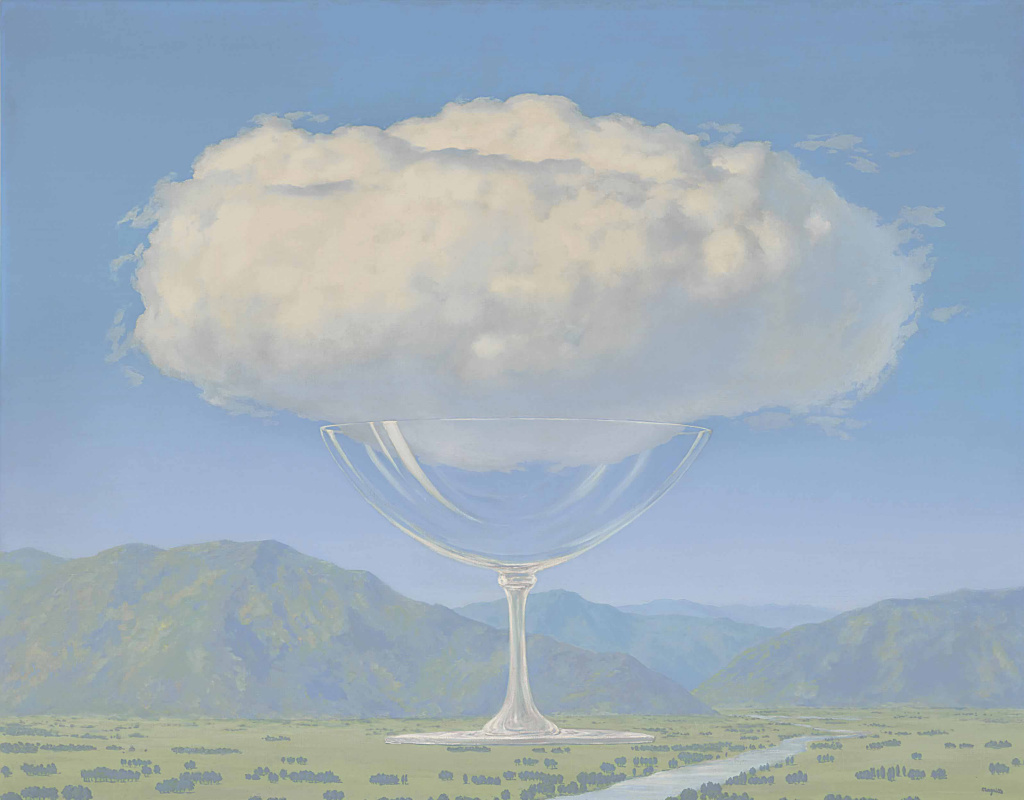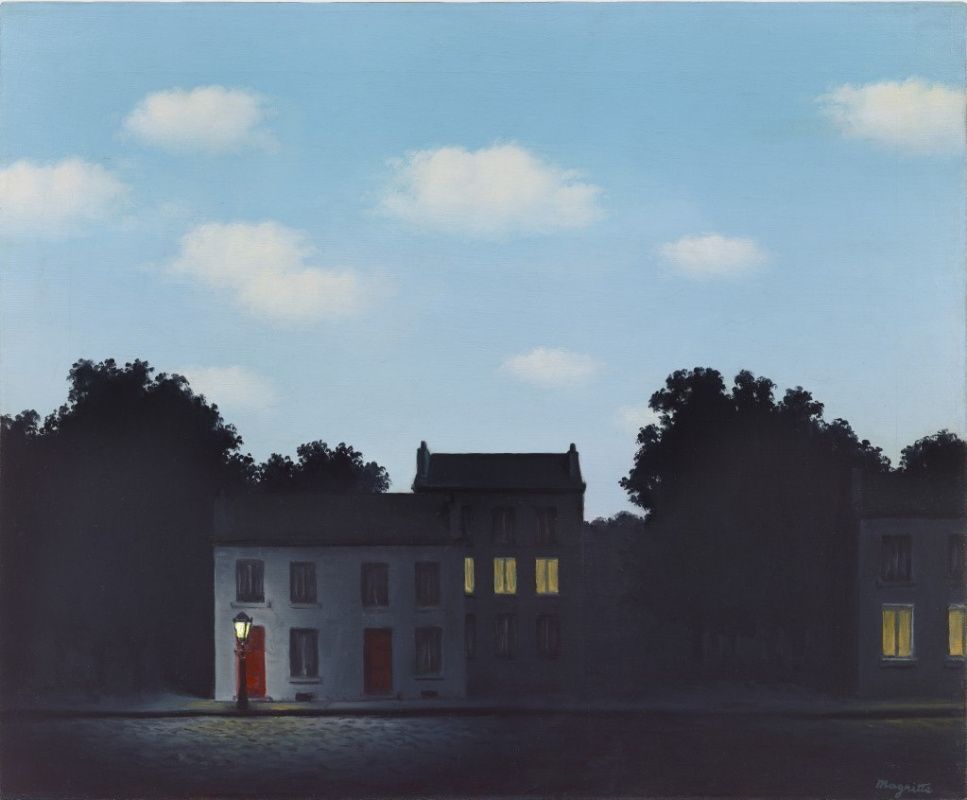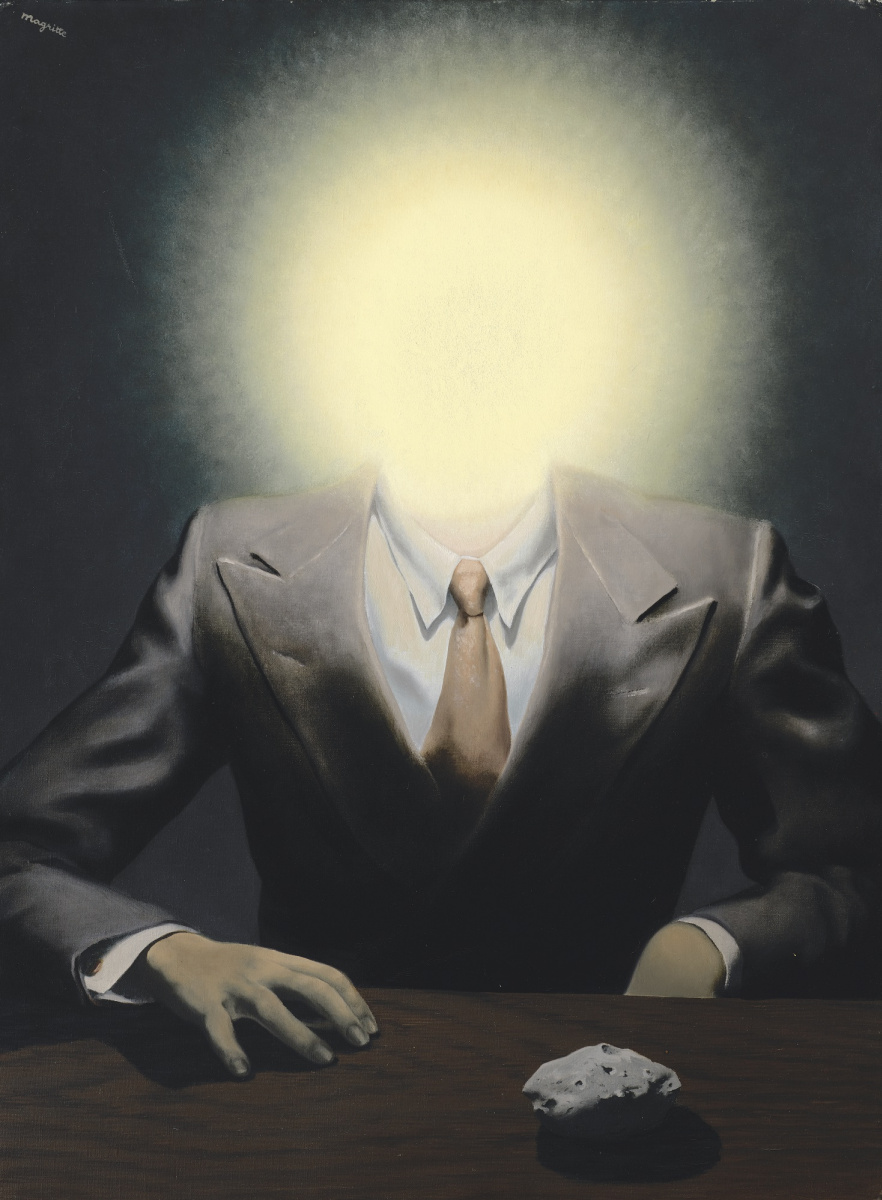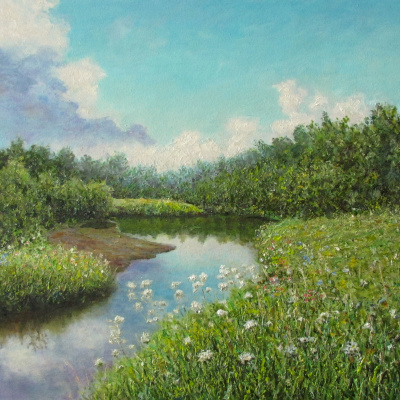A green apple, a man in a strict coat and bowler hat, a smoking pipe — these are the first associations that arise about the Belgian surrealist René Magritte. However, neither The Son of Man (1964), nor The Treachery of Images (1929), being the record holders in recognition, are not among his most expensive paintings. On July 10, 2020, Christie’s sold his Arc de Triomphe, which was painted in February-March 1962, for about $ 22.4 million. It took the third place among the works by Magritte ever put up for public auction. Shall we take a look at the top five?
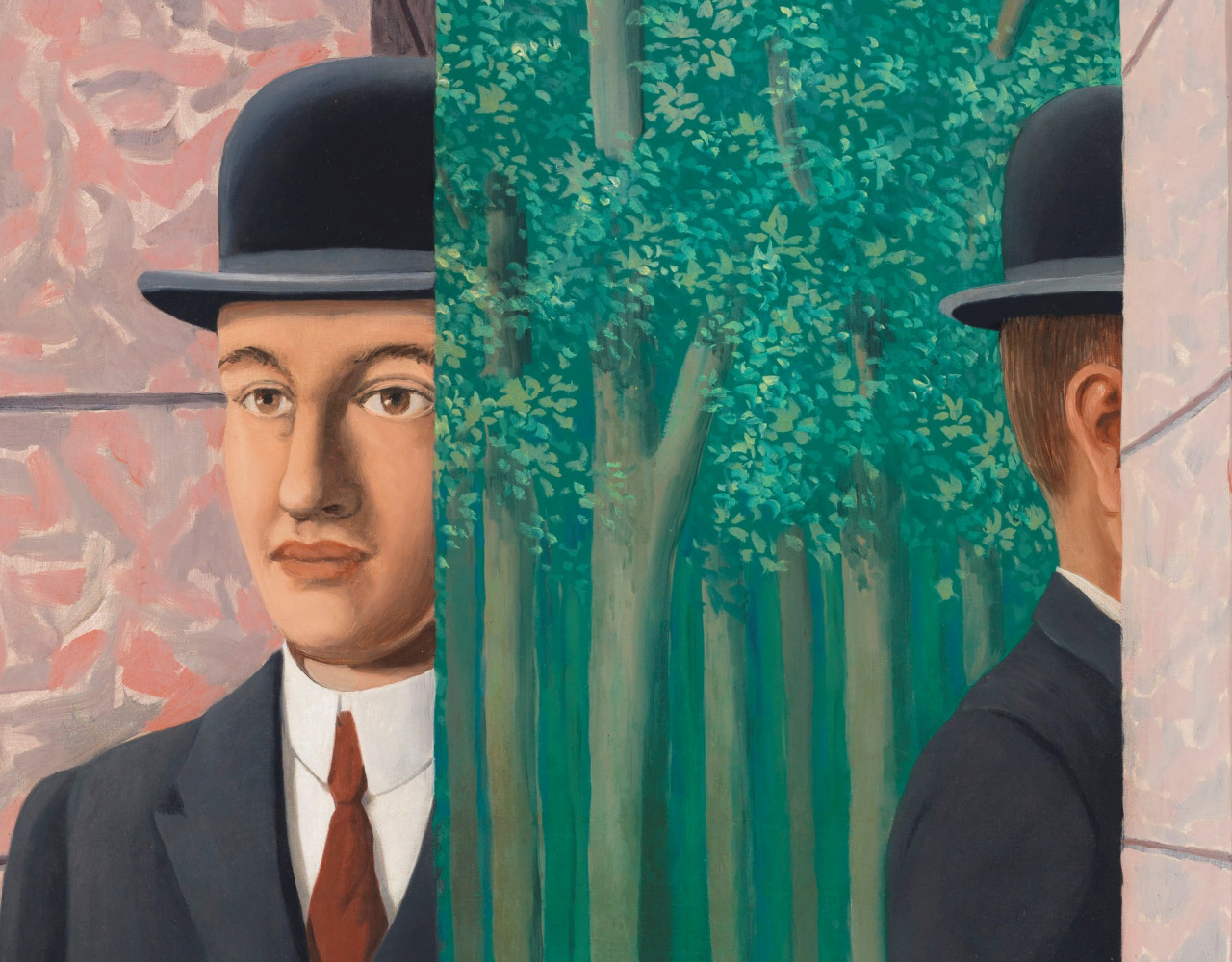
№5. The Heart String (Le Corde Sensible)
"I want to paint a cloud. So I draw some clouds, maybe a hundred of them. And each time I surround them with shapes whose meaning remains hidden from me until such time as inspiration visits anew and I know what fits beneath the cloud is a champagne glass", stated René Magritte to explain his artwork, The Heart String.Created in 1960, this painting became a completely unique motive in the artist’s work. In this deceptively simple image, he combined everyday objects and transforming elements. Among Magritte’s greatest works, this is one of the most poetic attempts to discover and enjoy the mystery that exists in every part of the real world.
La corde sensible
1960, 114×146 cm
Originally, Magritte presented this delicate image of a cloud in a crystal bowl to his wife Georgette. However, a few years later, an art dealer convinced the couple to sell the painting to her. Among the subsequent owners of the canvas was the son of the world famous jeweller Ronald Winston. And before the sale at Christie’s in February 2017, it belonged to one collector for almost three decades. The Heart String was bought for $ 17.9 million at auction three years ago. This was 2.5 times the previous record for Magritte’s works, set by the Personal Values painting, which was acquired for $ 7.1 million in 1998 by the Museum of Modern Art of San Francisco.
No 4. Empire of the Lights
"I got the idea that night and day exist together, that they are one. This is reasonable, or at the very least it’s in keeping with our knowledge: in the world night always exists at the same time as day. (Just as sadness always exists in some people at the same time as happiness in others)", explained René Magritte.The key element of his Empire of the Lights was a quiet street immersed in darkness, very similar to the Rue Esseghem in Brussels, where the artist lived. A lone lantern illuminates the stage like a lighthouse, with only a few windows faintly glowing from within. However, this serene nighttime landscape is crowned by a day-sunlit sky with clouds drifting on it.
L’empire des lumières
1949, 48.6×58.7 cm
This paradoxical image of a night street, painted in 1949, was first publicly auctioned by Christie’s in November 2017 and was purchased for $ 20.6 million. This is the first work in the iconic series that the artist developed over the next 15 years. In 1950, the painting was acquired by Nelson Rockefeller, the head of the famous family of industrialists, politicians and bankers at that time. Other original copies can be seen in the permanent collections of the Museum of Modern Art in New York and the Royal Museum of Fine Arts of Belgium.
No 3. Triumphal Arch
"Growing from the earth to the sun, a tree is an image of certain happiness. To perceive this image we must be immobile like the tree. When we are moving, it is the tree which becomes the spectator. It is witness, equally, in the shape of chairs, tables and doors, to the more or less agitated spectacle of our life. The tree, having become a coffin, disappears into the earth. And when it is transformed into fire, it vanishes into air," thought René Magritte.
L'Arc de Triomphe
March 1962, 130.6×162 cm
He finished this painting in late February — early March 1962 to show the barely dry canvas at the annual Salon Charleroi. Then the painting titled Tastes and Colours was acquired by Harry Torczyner, a close friend of the artist and a collector of his works. Later, Magritte renamed the work Triumphal Arch. "The decision was influenced by the fact that the tree was surrounded by a halo of chaotically scattered leaves, a magnificent background of green and blue, and it had to be given the only suitable name — the Triumphal Arch," wrote Torczyner.
In July 2020, the painting appeared for the first time in 28 years at auction and was sold for the equivalent of $ 22.4 million.
In July 2020, the painting appeared for the first time in 28 years at auction and was sold for the equivalent of $ 22.4 million.
No 2. The Common Place
René Magritte, The Common Place (1964). Private collection
This is the only painting on the list to feature the iconic image of Magritte — the man in a bowler hat. This faceless and ordinary figure in a typically bourgeois outfit embodied everything common and ordinary — what the artist once called "the unit of man". Since he often posed for photographers himself in a bowler hat specially purchased for such occasions, the character in the hat in his paintings was sometimes mistaken for something like a self-portrait. However, The Common Place, where the face of the mysterious hero is revealed, testifies to the fallacy of such an assumption.
Magritte deliberately did not explain whether the picture shows two identical people or only one visible from two points of view simultaneously. The title of the painting reflects this ambiguity — the figure appears and at the same time disappears, reveals and vanishes against the background of a completely unusual place. It represents a city and a forest at a time, both a foreground and background. Like the artist himself, the man in the bowler hat wanders through the strange landscape
of mysterious possibilities.
In February 2019, the painting was to become the record holder among Magritte’s works ever sold at auction. Christie’s put it up for sale with a preliminary estimate of £ 15—20 million ($ 20—26 million). However, the lot could not "take the height", its final price was 18.4 million pounds or 24.3 million dollars. However, this provided it with a "silver medal" on the podium of leaders.
No. 1. The Pleasure Principle
At the moment, this is the most expensive painting by René Magritte, which has been at the public auction. It was put up for auction at Sotheby’s in November 2018 — just three months before the sale of The Common Place — and was sold for $ 26.8 million.This is a delightful portrait of Edward James, the heir to millions, one of the most influential patrons of the Surrealists. He was introduced to Magritte by Salvador Dalí in 1937. The painting was commissioned by James from a photograph taken in accordance with the painter’s instructions by another surrealist, Man Ray. Magritte, meanwhile, had introduced the concept of the work before meeting James — a year earlier he had sketched a similar ink sketch on the front page of a hand-made book in honour of the poet Paul Eluard.
Le Principe du Plaisir
1937, 73×54.5 cm
None of René Magritte’s paintings has reached the $ 30 million mark so far. This is surprising, because surrealism
plays an important role in the artistic canon of the twentieth century, and the popularity of this artist’s works has been growing in recent years. However, we are talking about open bidding, where prices are called out loud. The cost of private deals is never disclosed, but according to The Art Newspaper, in such cases, some of Magritte’s works were sold "in the range from 30+ million to 40+ million dollars". However, if the current owner of The Son of Man decides to sell this painting, we will surely hear about more impressive amounts.
Based on materials from the official websites of the Christie’s and Sotheby’s auction houses






